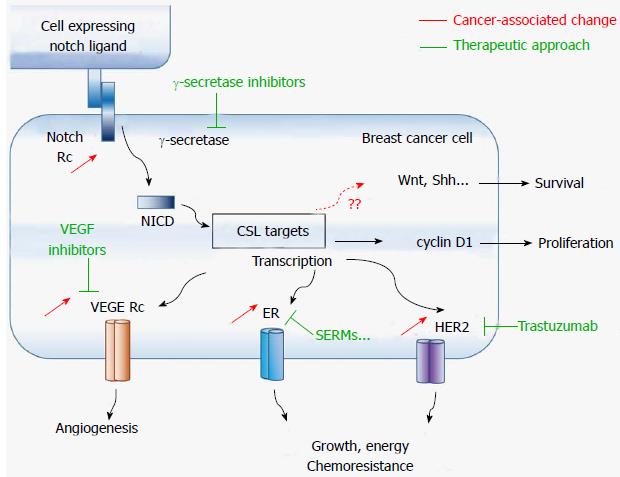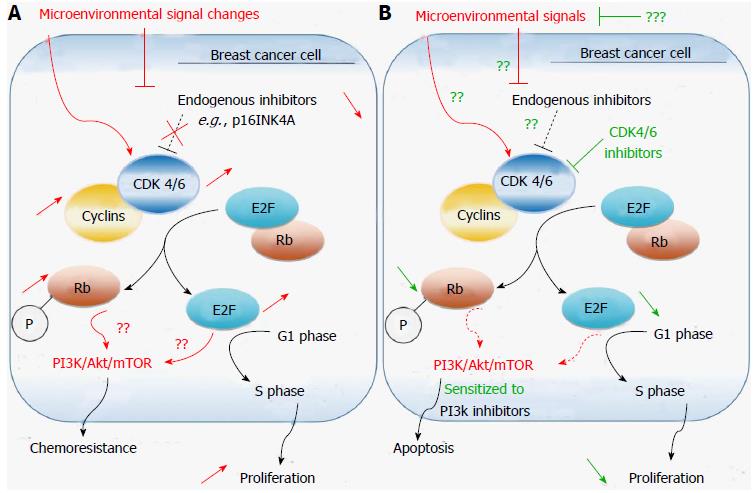Copyright
©2014 Baishideng Publishing Group Inc.
World J Clin Cases. Dec 16, 2014; 2(12): 769-786
Published online Dec 16, 2014. doi: 10.12998/wjcc.v2.i12.769
Published online Dec 16, 2014. doi: 10.12998/wjcc.v2.i12.769
Figure 1 Notch signaling in breast cancer.
In Notch-driven breast cancers, tumor cells and neighboring cells express Notch ligand and receptors. In presence of ADAM/TACE and γ-secretase enzymatic complex, Notch ligand-receptor interactions result in the release of Notch intracellular domain (NICD), which translocate to cell nucleus and activate CSL transcription factor. Target genes include signaling molecules involve in cancer cell survival, proliferation, angiogenesis, growth, energy metabolism, and chemoresistance. Inhibitors of many of these signaling molecules have been developed and are in use in various cancers, including g-secretase inhibitors, vascular endothelial growth factor inhibitors, estrogen signaling inhibitors, and HER2 inhibitors. ER: Estrogen receptor; HER2: Epidermal growth factor receptor 2; ADAM/TACE: A disintegrin and metalloprotease/tumor necrosis factor-α converting enzyme; CSL: CBF1/Suppressor of Hairless/LAG-1.
Figure 2 CDK4/6 signaling in breast cancer.
A: Cyclin dependent kinases (CDK) 4/6 signaling is overexpressed in breast cancer. Such overexpression, which results from the silencing of CDK endogenous inhibitors, participate directly to cancer cell proliferation by triggering G1-S transition, and indirectly to chemoresistance via a PI3K/Akt/mTOR-dependent mechanism; B: CDK4/6 inhibitors sensitize chemoresistant cells to PI3K inhibitors and various other anticancer agents. PI3K: Phosphatidylinositol 3-kinas.
- Citation: Kamdje AHN, Etet PFS, Vecchio L, Tagne RS, Amvene JM, Muller JM, Krampera M, Lukong KE. New targeted therapies for breast cancer: A focus on tumor microenvironmental signals and chemoresistant breast cancers. World J Clin Cases 2014; 2(12): 769-786
- URL: https://www.wjgnet.com/2307-8960/full/v2/i12/769.htm
- DOI: https://dx.doi.org/10.12998/wjcc.v2.i12.769










